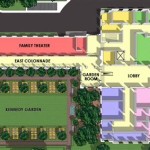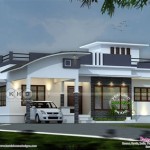Perfect House Plan For Empty Nesters: Designing for Comfort and Functionality
As children grow and leave the family home, many parents find themselves in a new phase of life, often referred to as the "empty nest" stage. This transition presents a unique opportunity to reassess living arrangements and consider downsizing or modifying their existing home to better suit their evolving needs and desires. Designing the perfect house plan for empty nesters requires careful consideration of factors such as lifestyle changes, future accessibility, and long-term comfort and financial prudence. This article will explore key aspects of creating a functional and fulfilling home during this significant life stage.
Prioritizing Single-Level Living for Enhanced Accessibility
One of the most crucial considerations for empty nesters is accessibility. As individuals age, mobility may become a concern. Therefore, a single-level house plan eliminates the need for stairs, reducing the risk of falls and making it easier to navigate the home. This design choice promotes aging in place, allowing homeowners to remain in their residence comfortably and safely for many years to come. Single-level living also simplifies chores such as cleaning and maintenance, freeing up time for leisure activities.
Elements to consider when prioritizing single-level living include wide doorways and hallways to accommodate wheelchairs or walkers, grab bars in bathrooms, and lever-style door handles that are easier to grip. Open floor plans, characteristic of single-level designs, enhance accessibility and create a sense of spaciousness. Ramps can be incorporated into the design if there are minor changes in elevation, ensuring seamless transitions between different areas of the home. Furthermore, a curbless shower design eliminates a common tripping hazard.
An often overlooked aspect is the placement of essential rooms. The master suite, laundry room, and kitchen should be strategically located close to each other to minimize unnecessary walking. Smart home technology, such as automated lighting and voice-activated controls, can further enhance accessibility and convenience. These features can be particularly beneficial for individuals with limited mobility or dexterity.
Scaling Down Living Spaces for Reduced Maintenance and Improved Efficiency
With children gone, the need for large bedrooms and multiple living areas often diminishes. Empty nesters can benefit from downsizing to a smaller, more manageable home. This can involve building a new home specifically designed for their needs or renovating their existing residence to repurpose unused space. A smaller home translates to reduced maintenance, lower utility bills, and a more streamlined lifestyle.
When scaling down living spaces, it is essential to prioritize quality over quantity. Focus on creating comfortable and functional areas that cater to the homeowner's current lifestyle. A well-designed kitchen with ample storage and counter space is crucial for those who enjoy cooking. A cozy living room with comfortable seating and good lighting is perfect for relaxation and entertainment. A dedicated home office or hobby room can provide a space for pursuing personal interests.
Outdoor spaces should also be considered when scaling down. A smaller yard requires less maintenance, but it can still provide a place for gardening, outdoor dining, or simply enjoying the fresh air. A well-designed patio or deck can extend the living space and create a seamless transition between indoor and outdoor areas. Low-maintenance landscaping options, such as native plants and drought-resistant ground cover, can further reduce the burden of yard work.
Furthermore, downsizing often leads to financial benefits. The sale of a larger home can free up equity that can be used for retirement savings, travel, or other pursuits. Lower property taxes and utility bills contribute to a more comfortable and financially secure lifestyle. The key is to find a balance between having enough space to feel comfortable and avoiding unnecessary expenses.
Incorporating Universal Design Principles for Long-Term Adaptability
Universal design principles aim to create homes that are accessible and usable by people of all ages and abilities. Incorporating these principles into a house plan for empty nesters ensures that the home will remain comfortable and functional for many years to come, even as the homeowner's needs change. Universal design is not just about accessibility; it is about creating homes that are more convenient and enjoyable for everyone.
Key elements of universal design include wider door frames and hallways to accommodate wheelchairs or walkers, easy-to-reach light switches and electrical outlets, and lever-style door handles and faucets that are easier to operate. Bathrooms should feature grab bars, adjustable showerheads, and comfortable-height toilets. Kitchens should have adjustable-height countertops and pull-out shelving for easy access to items.
Beyond these specific features, universal design also emphasizes creating spaces that are flexible and adaptable. Open floor plans allow for easy maneuvering and can be reconfigured as needed. Adequate lighting is essential for safety and visibility. Non-slip flooring reduces the risk of falls. Smart home technology can be integrated to provide added convenience and security.
The beauty of universal design is that it can be implemented subtly, without sacrificing aesthetics. Many of the features can be incorporated seamlessly into the design, making the home more comfortable and functional for everyone, regardless of their age or abilities. By thinking ahead and incorporating these principles, empty nesters can create homes that will serve them well for many years to come.
Another important consideration is incorporating adequate storage solutions. While downsizing, it is essential to strategically plan storage spaces to accommodate belongings without cluttering the living areas. Built-in shelving, custom cabinets, and attic or basement storage (if accessible) can maximize space and keep the home organized.
Careful thought should be given to the specific climate and location. Energy efficiency is a crucial factor, and features such as high-efficiency windows, insulation, and HVAC systems can significantly reduce utility bills. In areas prone to extreme weather conditions, consider adding features such as storm shutters or a backup generator.
Finally, it is important to work with experienced professionals, such as architects, builders, and interior designers, who understand the unique needs of empty nesters. These experts can provide valuable guidance and ensure that the house plan is tailored to the homeowner's specific requirements and preferences. They can also help navigate building codes and regulations and ensure that the project is completed on time and within budget.
:max_bytes(150000):strip_icc()/SL-2049-F1-3204a31b3ccb426bade3f2380a29b2bd.jpg?strip=all)
Why Bellewood Cottage Is The Perfect House Plan For Empty Nesters

Empty Nester House Plans Retirement The Designers
:max_bytes(150000):strip_icc()/bellewood-front-c9a517fbf0864908a6a2fcec4a736e74.jpeg?strip=all)
Why Bellewood Cottage Is The Perfect House Plan For Empty Nesters
:max_bytes(150000):strip_icc()/nautical-cottage-a415ead01c7141f2bb653b790b15b1f4.jpg?strip=all)
House Plans Under 1 800 Square Feet Perfect For Empty Nesters

Empty Nester House Plans Retirement The Designers
:max_bytes(150000):strip_icc()/sl-2004_4cp_frontright_0-7fc4d68f01494c5f8cd449657af22329.jpg?strip=all)
House Plans Under 1 800 Square Feet Perfect For Empty Nesters

Three Perfect Empty Nester House Plans The Designers
:max_bytes(150000):strip_icc()/SL-2009_4CP-front_0-8fdca8e211214d4182e879d1a0af71de.jpg?strip=all)
House Plans Under 1 800 Square Feet Perfect For Empty Nesters

Empty Nesters Dream Home Bunch Interior Design Ideas

Empty Nesters House Plan No 580762 Plans By Westhomeplanners Com Pantry And Perfect Bathro Small Floor Nester








